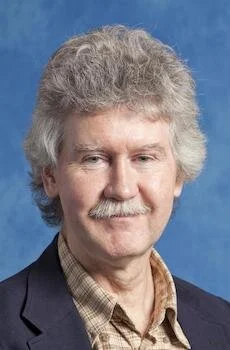The CoWork webinar series is dedicated to the exploitation of the coherence properties of X-rays for advanced materials characterization, with a special focus on inverse microscopy techniques, such as Coherent Diffraction Imaging (CDI), Ptychography and Holography. It is an introduction to Coherent X-ray imaging methods to facilitate the access to advanced microscopy techniques to new users and it welcomes all researchers intrigued by the spectacular coherence properties of X-rays produced at modern synchrotron sources – of which MAX IV is a first example.
When: Thursday February 25, 15.30 - 16.30
Speaker: Ian Robinson, University College London and Brookhaven National Lab, USA
Title: Effectiveness of Phasing Algorithms in Bragg Coherent Diffractive Imaging
Please find the recorded webinar here!
Bio:
Ian Robinson is a group leader in the Condensed Matter Physics and Materials Science Department at Brookhaven National Laboratory and professor at the London Centre for Nanotechnology, University College. His research is currently focussed on the development of coherent X-ray diffraction methods for imaging the structure of nanoparticles. His research makes extensive use of synchrotron radiation and Free-ELectron Lasers. He built a beamline at Brookhaven to develop Surface X-ray Diffraction and a second one at Argonne for Coherent X-ray Diffraction. One outcome of the work was the discovery of Crystal Truncation Rods, for which he was awarded the Surface Structure Prize in 2011 and the Gregori Aminoff Prize in 2015.
Abstract:
A solution to the crystallographic “phase problem” was proposed by David Sayre immediately after the announcement of Shannon’ Information Theorem: if diffraction can be sampled more than twice as finely as the Bragg peak spacing, the problem is overdetermined and can be solved [1]. Sayre did not specifically mention the need for X-ray coherence, which has been happily solved with the development of the latest synchrotron sources. This produces speckle in the diffraction patterns which can be oversampled to overdetermine the phase problem. Sayre also did not specifically propose a closed form solution of the phase problem either. Many methods have been proposed to invert the diffraction to real space images over the 68 years since, all of them iterative algorithms that converge on the solution. But despite “proofs” to the contrary, these methods are usually prone to local minima giving multiple solutions with real experimental data containing noise. In this presentation we will introduce the possibility that the speckle inversion “phase problem” may be amenable to Machine Learning approaches in the future. Our first demonstration is published [2] and a more general result is in preparation [3].
[1] Some implications of a theorem due to Shannon, Acta Cryst. 5, 843 (1952).
[2] Complex Imaging of Phase Domains by Deep Neural Network Longlong Wu, Pavol Juhas, Shinjae Yoo and Ian Robinson, IUCrJ 8 12-21 (2021)
[3] 3D Coherent X-ray Imaging via Deep Convolutional Neural Networks, Longlong Wu, Shinjae Yoo, Ana F. Suzana, Tadesse A. Assefa, Jiecheng Diao, Ross J. Harder, Wonsuk Cha and Ian K. Robinson, to be published
Webinar moderators
Members of the organising group.
Please contact either gerardina.carbone@maxiv.lu.se or asa.grunning@linxs.lu.se for any questions.

